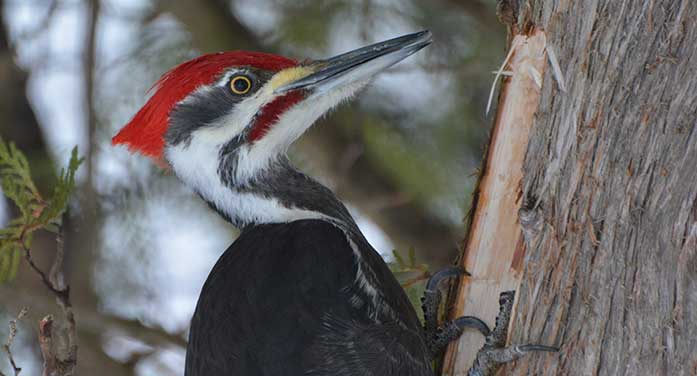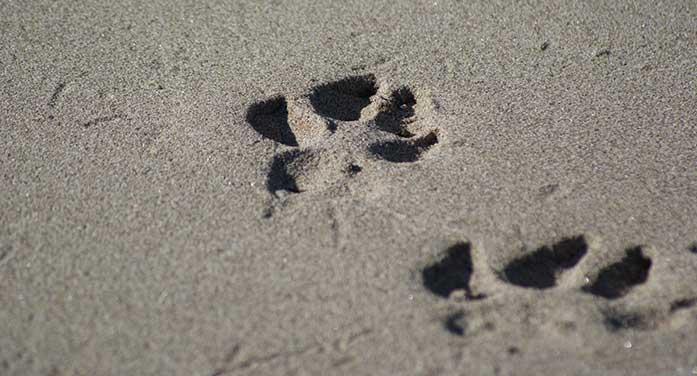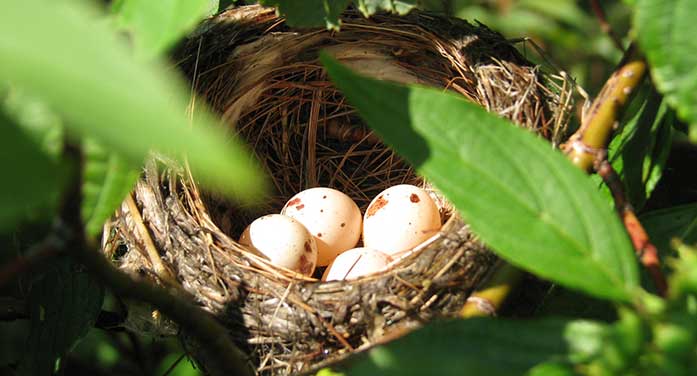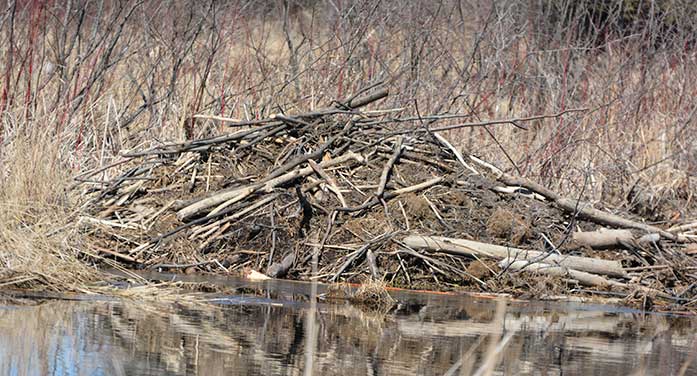 I’d like to introduce you to the signs that wild things leave when they share our landscape.
I’d like to introduce you to the signs that wild things leave when they share our landscape.
We already know birds sing and come to bird feeders, and that animals leave tracks. But what other clues do they leave to tell us they were here?
There are hundreds of ways we can see what shares our space. Sights, smells, droppings, holes in trees, nests, songs and other sounds, and much more abound in nature.
Here are a few things to ponder:
Is there a feather lying in the snow? Perhaps a bird hastily took off and dropped it? Or the bird just had a close call with a predator, resulting in the feather being plucked but was able to escape? Or maybe the bird was just moulting its feathers, as it does every year?
Why do so many trees have holes in them? Many birds will work a tree when trying to build a nest or search for food.
Small piles of bark at the base of a tree may indicate a woodpecker has been hard at work searching for insects – so look up since it might still be there.

A Pileated Woodpecker hunts for food
Larger holes, dug by woodpeckers, usually mean they were searching for food. But a fresh hole appearing in April or May might indicate they’ve excavated a nest hole to raise their young. Look for fresh markings around the edge of the hole to decide if the hole is new or has been there for some time.
 Sapsuckers (a type of woodpecker) bore hundreds of holes in trees as they try to encourage the tree to release its sap so they can feed on the insects that are attracted to the sap. Even hummingbirds will visit these holes in the hope of gathering a few tasty insect morsels.
Sapsuckers (a type of woodpecker) bore hundreds of holes in trees as they try to encourage the tree to release its sap so they can feed on the insects that are attracted to the sap. Even hummingbirds will visit these holes in the hope of gathering a few tasty insect morsels.
Is bark rubbed off a tree? It’s likely caused by a deer when it tries to rub the velvet off its antlers.
Do you see scratch marks on a tree trunk? That might indicate a bear is nearby and it scratched the tree to sharpen its claws and perhaps mark its territory.

Tracks from an unknown canid (members of the dog family)
Is there a funny smell when you walk in the woods? This indicates that an animal has left a scent trail. This usually arises because it encountered a threat, as in the case of a skunk, but it can also mean it’s warning off rivals or trying to attract a mate.
What was that noise you heard?
This one has many answers. We already know about bird song, but many mammals make noises, too. We’re all familiar with coyotes as they serenade the moon but many other critters also make sounds. Sometimes it’s an alarm call such as the snort a deer might make or the scolding sound from a red squirrel.
Other things also make telltale noises – insects have myriad ‘songs,’ from the familiar cicada to the buzz of a bee to the chirp of a cricket. Each of these has meaning to the animal that produces them, but all generally relate to territory, mate attraction or threat response.

A willow flycatcher nest
What’s the lump in the tree? Is it a nest? If you see a large array of sticks, you instantly know that a hawk, owl or crow has tried to nest there in the past.
Almost all birds build nests of some type but so do other animals. Most are underground or in secluded spaces, but the grey squirrel builds an elaborate nest called a drey that appears as a large irregularly-shaped ball of leaves in a hardwood tree.
Right now we see hundreds of scraggly ‘nests’ in our hardwoods – what could be building them? They’re the remnants of nests for the fall webworm, a type of moth, and they were built last summer. The nests are designed to protect the caterpillar larvae from foraging birds and mammals, but now they’re simply leftover webbing that will eventually disappear as weather erodes them.
Nature is full of mysteries to discover, but she leaves excellent clues for us to follow.

A beaver lodge on the Nonquon River in Ontario
Geoff Carpentier is a published author, expedition guide and environmental consultant. Visit Geoff on LinkedIn, Instagram and Facebook. For interview requests, click here.
The opinions expressed by our columnists and contributors are theirs alone and do not inherently or expressly reflect the views of our publication.
© Troy Media
Troy Media is an editorial content provider to media outlets and its own hosted community news outlets across Canada.

